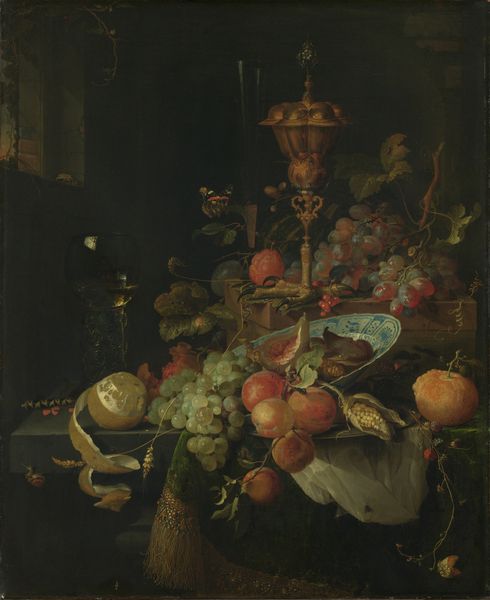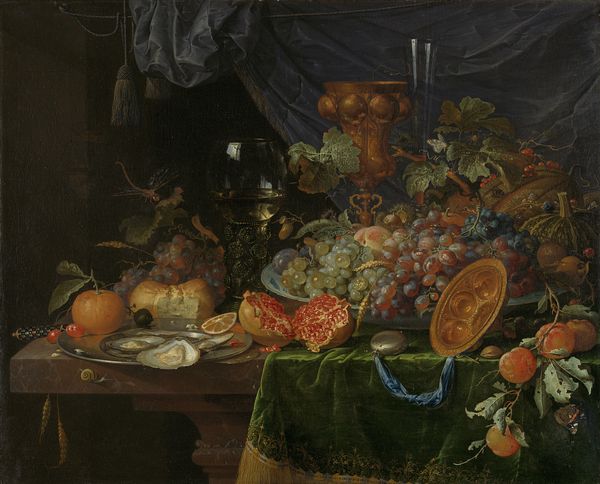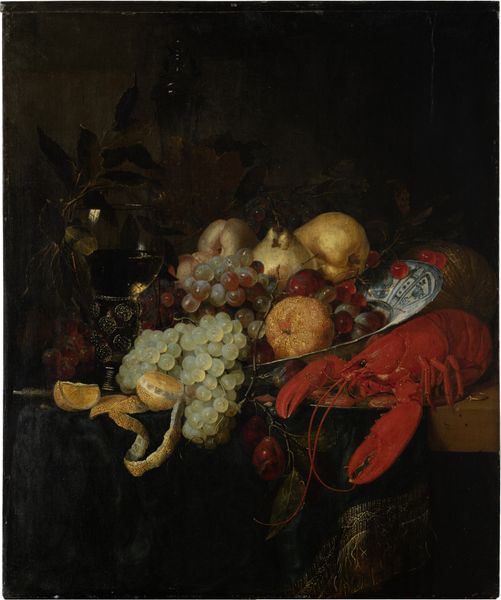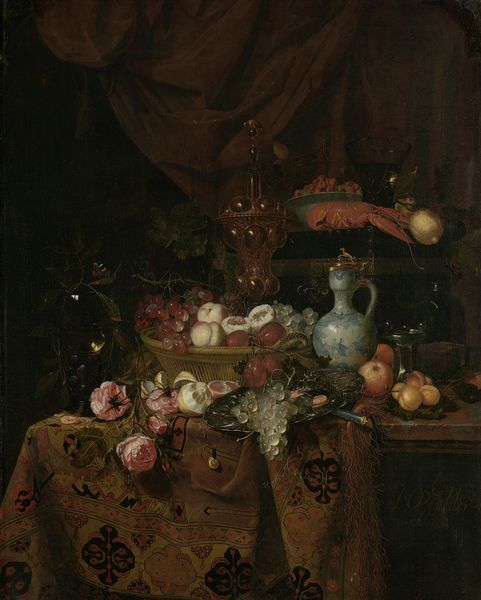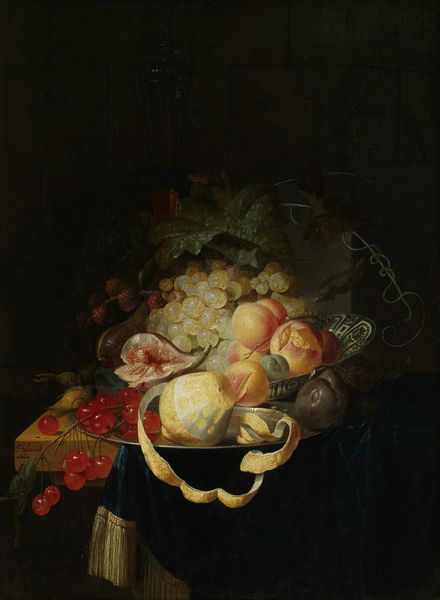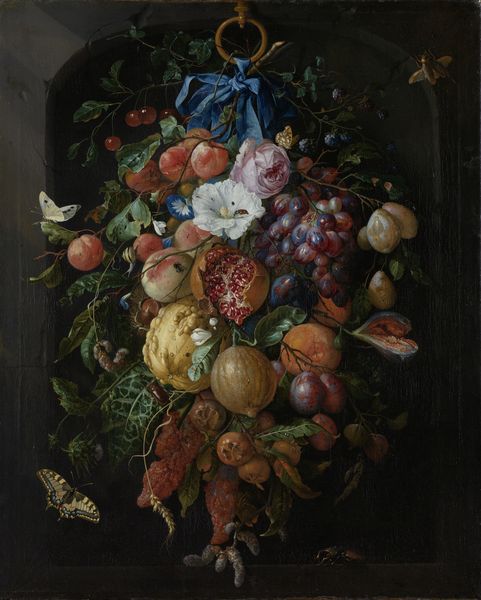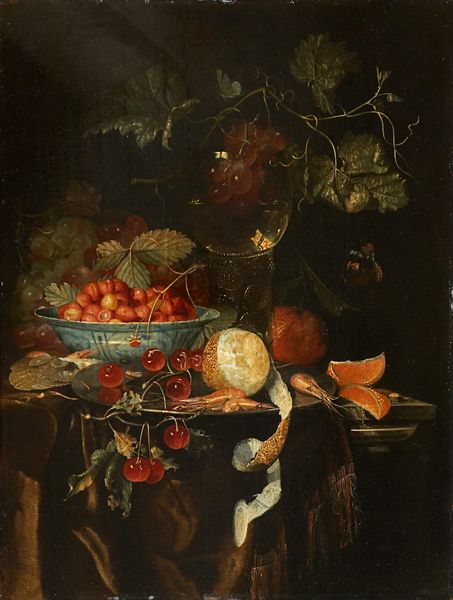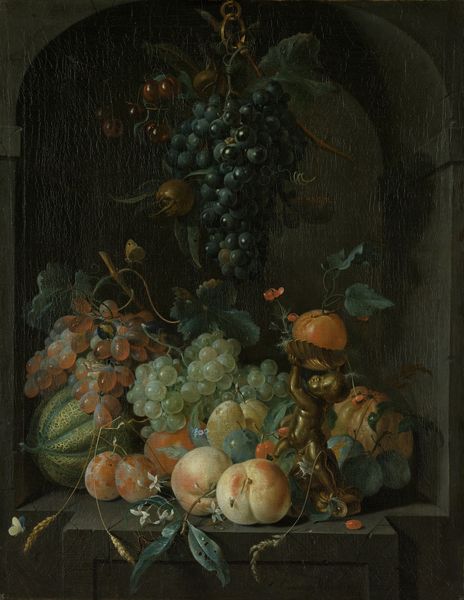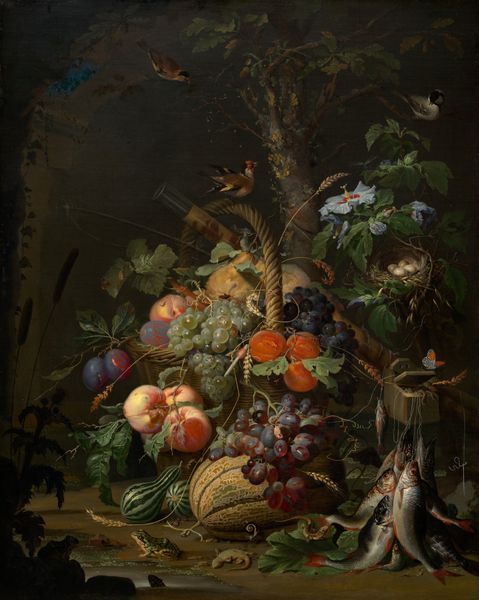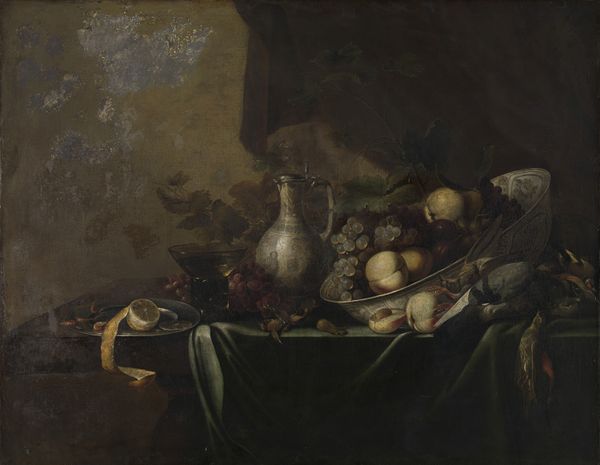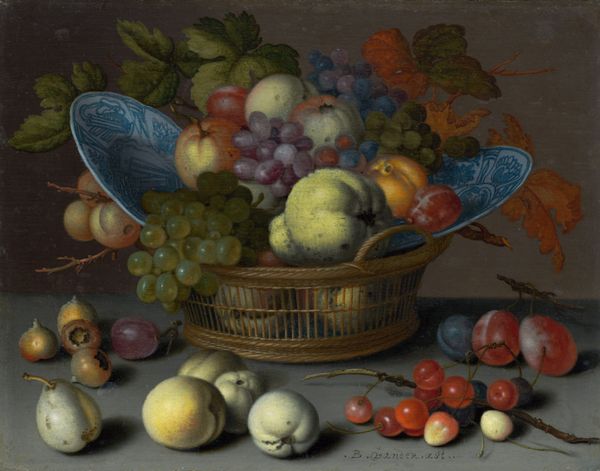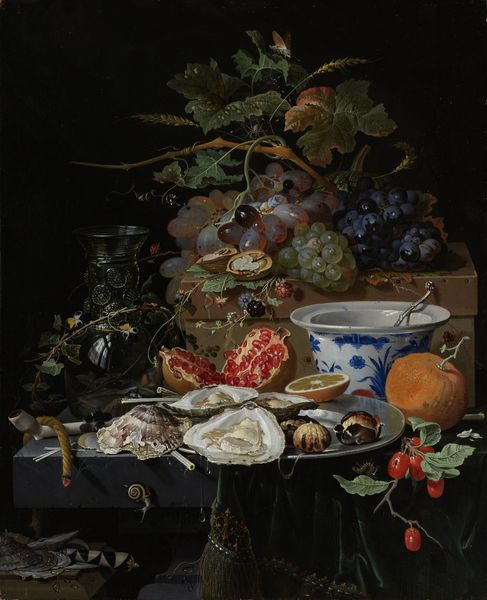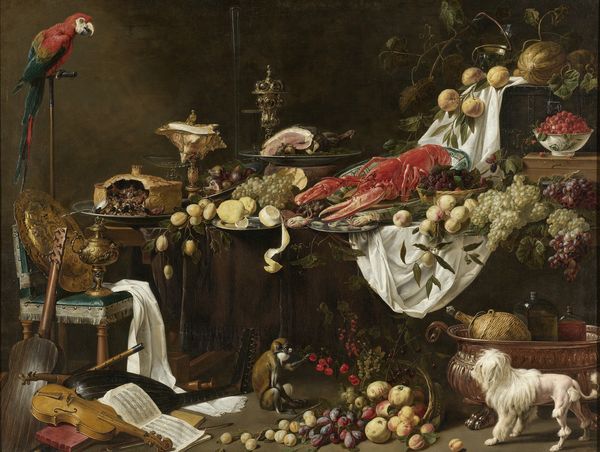
mixed-media, oil-paint
#
mixed-media
#
baroque
#
dutch-golden-age
#
oil-paint
#
vanitas
#
fruit
#
underpainting
#
mixed media
Dimensions: height 100 cm, width 85 cm, depth 9 cm
Copyright: Rijks Museum: Open Domain
Curator: This compelling artwork is "Still Life with Golden Goblet" painted sometime between 1640 and 1660 by Pieter de Ring. Its opulent display tells us much about Dutch Golden Age aesthetics and the burgeoning mercantile class. Editor: The painting has an almost unsettling richness, don't you think? The textures are practically edible, and yet, that sharp, slightly oppressive darkness looms in the background. Curator: Yes, it's classic de Ring. He captures that Baroque fascination with both splendor and decay. It also demonstrates how artists navigated patronage and artistic freedom at that time. The display isn't just random luxury. It reflects the Netherlands’ growing global trade connections. Editor: Absolutely. I’m drawn to the golden goblet, though. The goblet is a potent symbol of earthly glory, almost arrogantly flaunting wealth. Note the avian figure atop the lid – perhaps a phoenix. Do you think it alludes to resurrection, or is its function simply decorative? Curator: Given the context and period, I’d suggest both. While clearly intended as decoration, its presence adds to the 'vanitas' theme so common in these pieces – a meditation on the transience of earthly possessions and pleasures. Think of the decaying fruit or the overturned glass. Editor: Yes, exactly! These symbols are interwoven and reveal themselves with sustained viewing. Even the colors play into the theme of fleeting existence: The radiant hues of the lobster contrasting so vividly with the blue velvet, promising short-lived pleasures of taste. And a sense of transience lingers even in the composition: the precarious balance of the silver dish seems ready to teeter off the edge. Curator: You make a great point. The work almost functions as a form of visual propaganda, subtly reinforcing the values of moderation, humility, even in an era of increasing economic prosperity. Consider the rising influence of the Calvinist church and its emphasis on simplicity. Editor: I agree. Perhaps these lavish paintings also served a psychological role: a display to quell existential anxieties tied to newfound riches, all packaged as moral instruction. Ultimately, for me, the symbolism gives this picture its abiding strength. Curator: It is a layered narrative indeed. It really highlights the complicated interplay between personal indulgence and the public values espoused by Dutch society during the Golden Age.
Comments
No comments
Be the first to comment and join the conversation on the ultimate creative platform.
